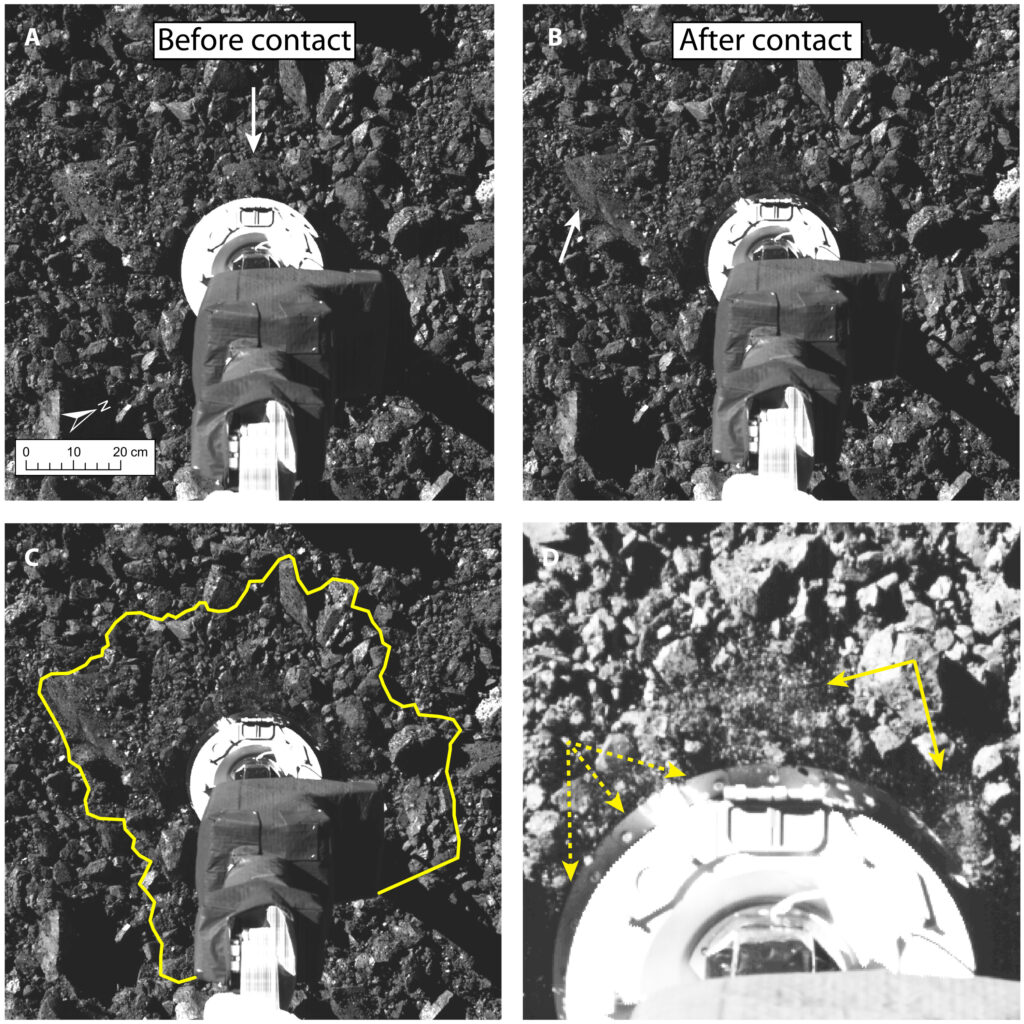This is an extract from the peer-reviewed journal Science Advances (Vol. 8, No. 27)
When the OSIRIS-REx spacecraft pressed its sample collection mechanism into the surface of Bennu, it provided a direct test of the poorly understood near-subsurface physical properties of rubble-pile asteroids, which consist of rock fragments at rest in microgravity. Here, we find that the forces measured by the spacecraft are best modeled as a granular bed with near-zero cohesion that is half as dense as the bulk asteroid. The low gravity of a small rubble-pile asteroid such as Bennu effectively weakens its near subsurface by not compressing the upper layers, thereby minimizing the influence of interparticle cohesion on surface geology. The underdensity and weak near subsurface should be global properties of Bennu and not localized to the contact point.
Funding:This material is based on work supported by NASA under contract NNM10AA11C issued through the New Frontiers Program. C.A. acknowledges funding support from the National Research Agency (ANR), project ORIGINS (ANR-18-CE31-0014). P.M. and M.D. acknowledge funding support from CNES. B.R. acknowledges funding support from the U.K. Science and Technology Facilities Council (STFC). P.S. acknowledges funding support from NASA through Auburn University award number 19-ENG-209381-UC. S.R.S. acknowledges funding support from NASA under grant no. 80NSSC18K0226 as part of the OSIRIS-REx Participating Scientist Program. Y.Z. acknowledges funding from the Université Côte d’Azur “Individual grants for young researchers” program of IDEX JEDI. P.M. and Y.Z. acknowledge funding from CNES and from the European Union’s Horizon 2020 research and innovation program under grant agreement no. 870377 (project NEO-MAPP).

